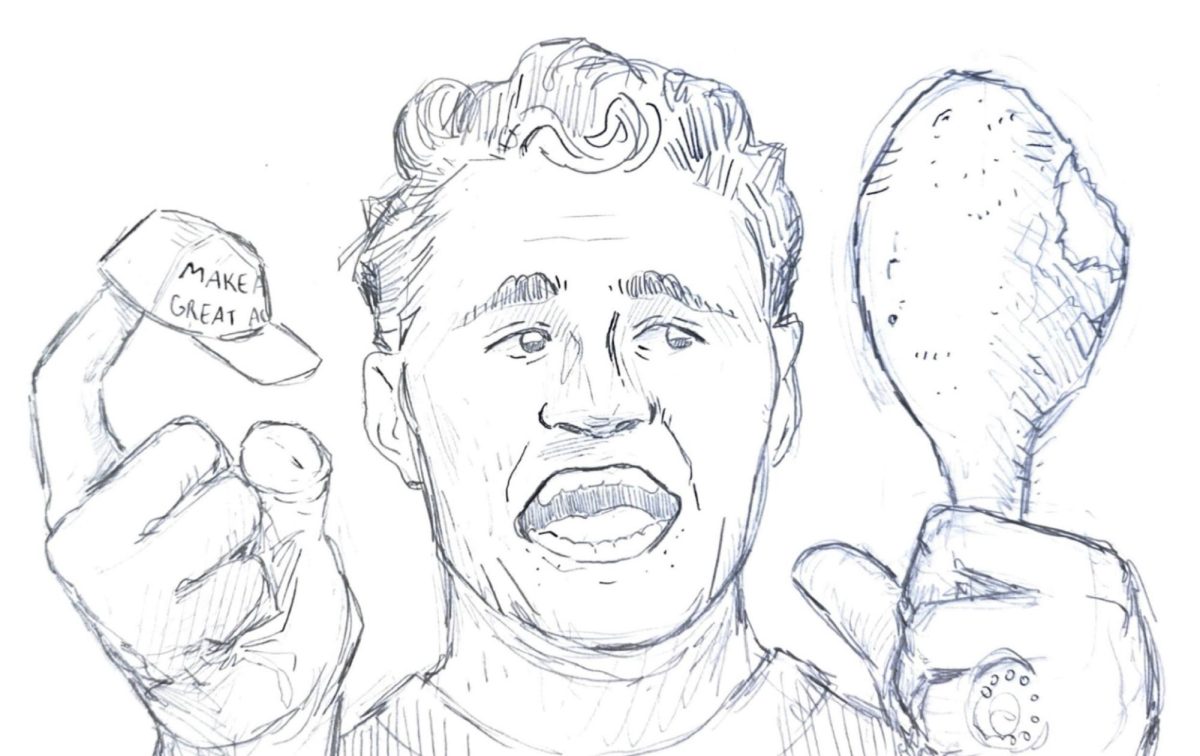I have a lot of respect for people who donate blood. They inconvenience themselves for the health of others, often without getting paid and without getting the title of “”volunteer.””
OK, so they get a free T-shirt and some orange juice, but that’s nothing compared to saving someone else’s life.
One of the reasons I respect blood donors so much is that I can’t donate. Needles and I just don’t agree.
The last time I had blood drawn, I dreaded it for days ahead of time. When I got to the hospital, my doctor decided to double the amount of tests she wanted done on my blood. There were so many little vials, I was surprised that my heart was still pumping blood through my body afterward. But the nurse sat me down, told me not to look at the needle and managed to make it relatively painless.
Although giving blood didn’t hurt much, the mere idea of the blood loss got to me for a few days. If I looked at the tiny hole in the crook of my elbow or thought about the process, I would shudder to think how much of my blood had been sucked out through that itty bitty hole. It was my blood. I’m very possessive about that kind of thing. It’s not the kind of thing I share with people, as I do my pens or pencils.
The problem is, I’m not the only one who feels this way. If I were, I could get used to the idea of being some kind of weirdo who didn’t like needles. There are thousands of people like me.
Many who don’t necessarily freak out at the sight of a hypodermic needle and who are eligible to donate just don’t have the time or the inclination to do so. This is getting to be a problem in the United States because our standards for blood donation are getting higher and more people need transfusions, yet fewer people want to donate. One estimate says that the United States will need 250,000 more units of blood than people will donate this year.
There are two possible solutions. One, with which I agree, is to get more people to donate blood.
The other one, which is more complicated and will take much longer, is to find a chemical substitute for blood that can be used in operations and trauma situations. This option is currently receiving a lot of attention, probably because it will lift the burden of guilt off those of us who don’t donate.
There are two fairly promising paths of research in the area of blood substitutes: plasma volume expanders and oxygen carriers. They are very lucrative fields for pharmaceutical companies, two of the major players being BioTime, Inc. and the Alliance Pharmaceutical Corp.
BioTime makes a product called Hextend, which is a chemically balanced plasma expander. Plasma expanders are based on a starch molecule that maintains blood pressure when blood is lost. They are later metabolized by the body and removed from the bloodstream.
The problem with plasma expanders is that they don’t have the ability to carry oxygen to the body and if blood is lost in great quantities, the patient will still need a transfusion.
Plasma expanders can temporarily allow people with blood loss to survive without blood. If a patient undergoes surgery, blood is removed and then put back in after the operation.
Also, with the use of plasma expanders, trauma patients can be stabilized instead of needing blood immediately.
Plasma expanders are often used with hyperbaric chambers, which involve the use of pressurized oxygen to increase the level of the necessary gas in the patient’s immediate environment.
Plasma expanders prolong the time before transfusion becomes necessary, but they don’t reduce the need for blood donations.
Oxygen carriers, however, are able to deliver needed oxygen to the body.
Alliance Pharmaceutical makes an oxygen carrier called Oxygent, which is made of fluorocarbons. This oxygen carrier supplies oxygen to the body faster than blood itself, but it doesn’t provide blood’s healing and disease-fighting properties.
Oxygent is still in its testing phase. It has not been approved by the Food and Drug Administration, a process that could take years or may not even happen at all, depending on the results of the trials. It is still unknown whether it can be safely used on trauma patients. The use of this product isn’t a viable option for people at present.
Where does that leave us? Back with the good old tirade about inconveniencing one person to save the life of another. If I were not so petrified of needles, I would take some time out of my routine every once in a while to donate blood — but I’m still working on that part.
As for the rest of you eligible donors, what are you waiting for? If you’re not afraid of needles, and you’re free on, say, the third Sunday of every other month, go donate blood! It only takes about an hour, and according to the Red Cross’ Web site, your donation can help to save the lives of up to three people.
And who knows, maybe someday you or a loved one will need a transfusion, and someone like you will come along and help out.
It can’t hurt in the long run, and you’ll probably get a free T-shirt out of the bargain — a really cool T-shirt that proves you aren’t a selfish bastard, in case you should ever be called upon to provide evidence.
So please, donate blood.







